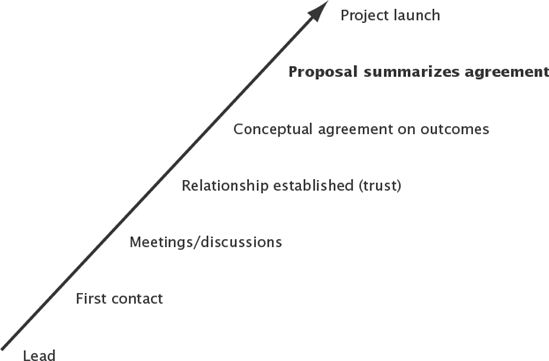Chapter 7. Closing the Sale: How to Write Proposals and Cash Checks
Proposals are summations, not explorations. Ironically, consultants aren't more successful in getting their proposals accepted when they send out too many, rather than too few. This isn't a numbers game; it's a quality game.[39] (I once worked with a consulting firm in New York that actually used as a metric of success how many proposals were submitted a week. When I asked what the hit rate was, they told me they weren't instructed to track that!)
The key to an effective proposal is gaining the conceptual agreement beforehand (described in the prior chapter). Consequently, a proposal isn't a document or an event, or a one-time crucible in which the business is gained or lost. It's simply a normal (though highly important) part of the sales acquisition process. (See Figure 7.1.)
There is a methodical sequence you can use to write proposals. A good proposal needn't be much longer than two or three pages, no matter how large the contract or how elaborate the methodology, because the proposal should not be serving as a negotiating document, a sales brochure, a credibility piece, or any other purpose. It should simply be placing the conceptual agreement in context with other required elements of a good proposal (for example, accountabilities, terms, and so on).

Figure 7.1. The proposal's place in the project life cycle. ...
Get Getting Started in Consulting, Third Edition now with the O’Reilly learning platform.
O’Reilly members experience books, live events, courses curated by job role, and more from O’Reilly and nearly 200 top publishers.

